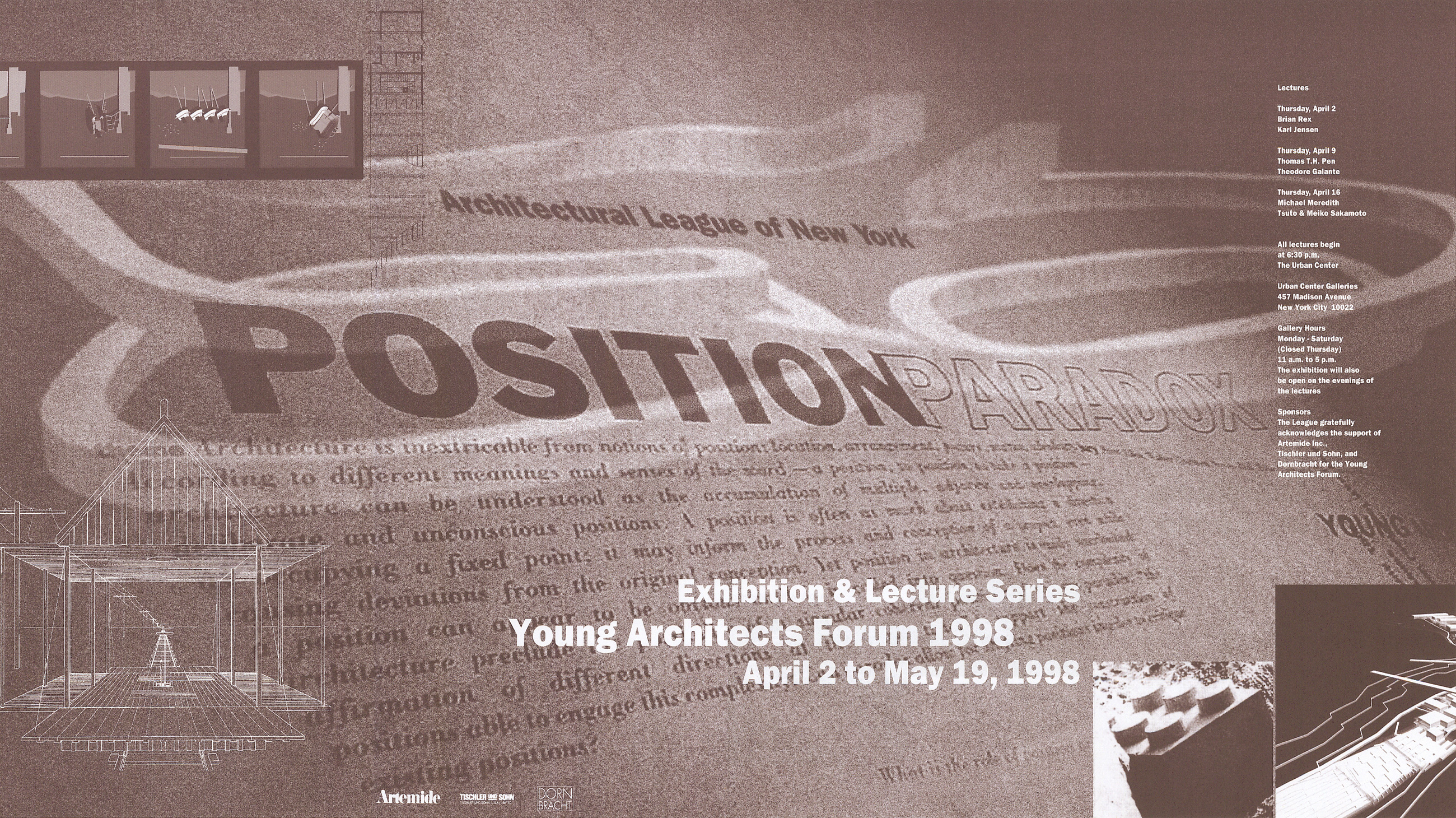Established in 1981 to recognize visionary work by young practitioners, The Architectural League Prize is an annual competition, lecture series, and exhibition led by the League and its Young Architects + Designers Committee.
Architecture is inextricable from notions of position: location, arrangement, posture, status, ideology. According to different meanings and senses of the word—a position, to position, to take a position—architecture can be understood as the accumulation of multiple adjacent and overlapping, deliberate and unconscious positions.
A position is often as much about establishing a direction as occupying a fixed point; it may inform the process and conception of a project, even while causing deviations from the original conception. Yet position in architecture is easily overlooked: A position can appear to be obvious until it is called into question. Does the complexity of architecture preclude the possibility of a singular coherent position? If so, can paradox, “the affirmation of different directions at the same time,” [Gilles Deleuze, The Logic of Sense] support the construction of positions able to engage this complexity? Can paradox allow for shifting positions in order to critique existing positions?
This year’s League Prize asked entrants to consider the role of position in their work.
Winners included:
- Theodore Galante
- Karl Jensen
- Michael Meredith
- Thomas T.H. Pen
- Brian Rex
- Tsuto & Meiko Sakamoto
The theme was developed by the 1998 Young Architects + Designers Committee, which comprised past League Prize winners Paul Lewis, Linda Pollak, and Karen Stonely.
The competition jurors included Stan Allen, Walter Chatham, Steven Holl, and Billie Tsien.
More from past League Prize winners
Ecological crisis as moment of possibility
Design Earth founders El Hadi Jazairy and Rania Ghosn explain their League Prize installation.
Architecture Office lecture
Architecture Office's Nicole McIntosh and Jonathan Louie discuss misalignments of image and place.
Flash and spectacle in the face of austerity
Debroit-based Anya Sirota discusses the relationship between architecture, culture, and urban vitality.

